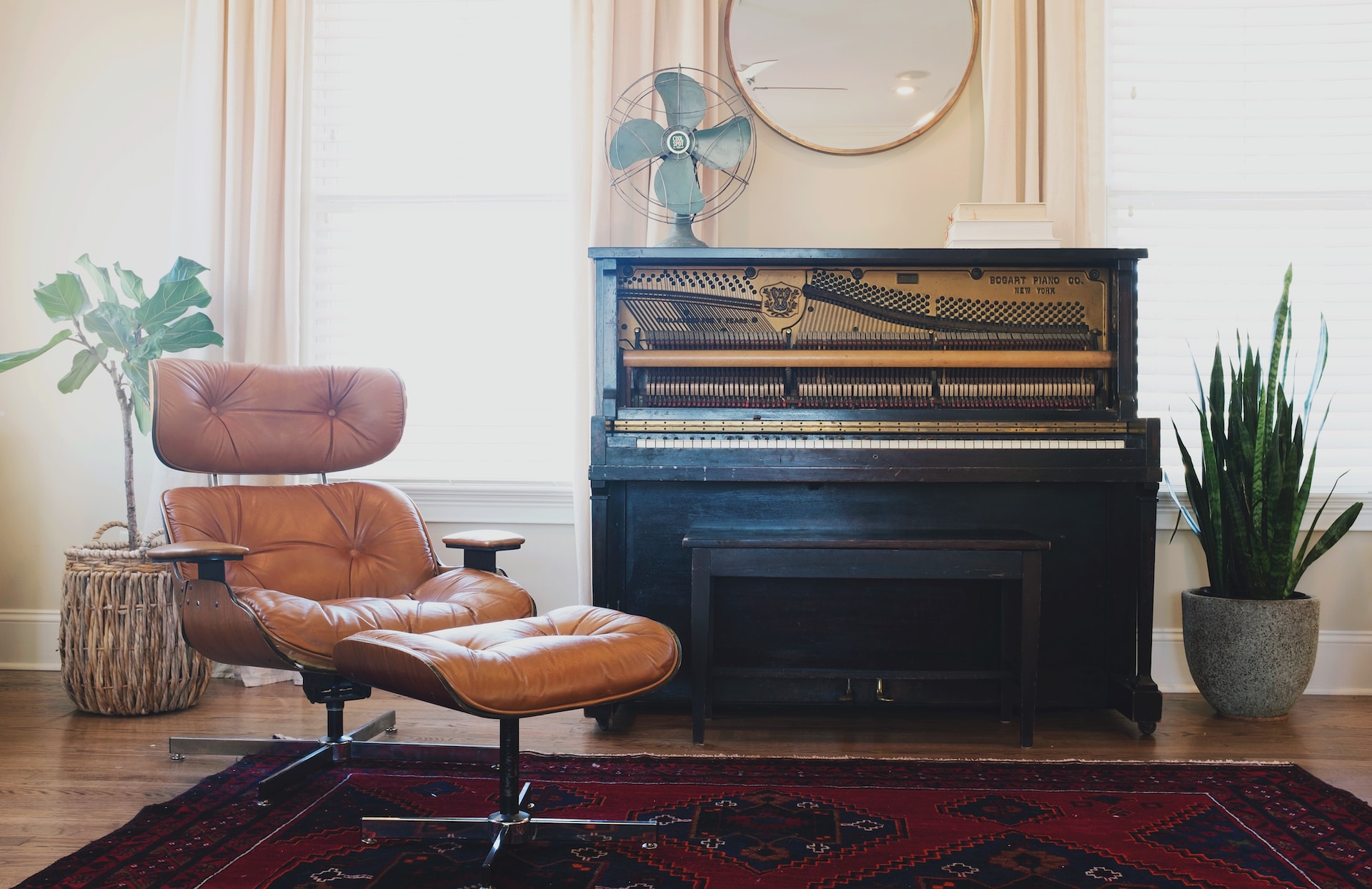American living rooms aren’t complete without a reclining chair (or a set of those overstuffed chairs). And while this classic piece of furniture is a symbol of lazing around and relaxing today, that’s not the function its forerunners served.
You can trace the origins of the recliner back to early dental and medical equipment. And it wouldn’t find its way into our rec rooms, living rooms, basements, and airports for almost another century. The design you know and love today is a product of over 150 years of innovation. And the long (and fascinating) history of recliners might surprise you.
Ancient Egyptian recliners
The earliest reclining chairs date back to ancient Egypt. These decorated specimens have been recovered from tombs, but they only loosely fit the definition of a recliner. You could sprawl on them, but they didn’t have any moving components.
The earliest models
The first recliner (the kind with intricate moving parts) appeared in 1850 as a camp cot in France.It’s France where the story of recliners begins. This prototype was designed for Napoleon III (Napoleon’s nephew), and it doubled as a bed. It featured padded armrests and upholstery for the frame, but it wasn’t exactly adjustable.
A decade later, in the 1860s the British developed the Morris Chair. This variant had a back that could be reclined to a certain degree, and it was meant to solve the problem of having to build different chairs for people of various sizes.
Dentist chairs
Although the Morris Chair was an invention for the living room (and it did gain popularity), the designs that would follow (and some that technically even preceded it) were strictly aimed for medical use.
The first mechanical dental chair, developed by James Snell in 1832, had a design that automatically raised the footrest as his patients leaned back on the chair. Later on, his system would become commonplace in dentist chairs. The chair allowed the dentists to raise their patients to three feet and recline at multiple titled angles.
Recliners make a debut in the U.S.
At any rate, the Morris Chair introduced in the 60s was the true pioneer of the modern recliner. A few decades later, adjustable chairs became more common, and the term ‘recliner’ was coined. But this popularity was still limited to Europe.
At the beginning of the 20th century, a modified Morris Chair made an appearance in the U.S. It had upholstered armrests, comfortable cushions, and you could lean back at multiple different angles.
Around that time, a reclining medical chair, dubbed Sitzmaschine, was developed Josef Hoffman for a Sanatorium in Vienna. It was designed for use by patients, but as people realized that relaxation wasn’t just for invalids and travelers, the Morris Chair became a popular piece of furniture for indoor use.
Recliners in the living room
Similar reclining chairs would soon pop up. One of them, the Foot’s Adjustable Rest Chair, caught people’s attention with its features like housing tables, desks, and lights. By now, recliners are looking more and more like the ‘overstuffed’ designs we have today.
These early overstuffed prototypes will go on to morph into traditional recliners. The mechanism didn’t require a lever or push-button since it automatically rose the footrests as you reclined.
The La-Z-Boy
A near-identical reclining wooden frame design was patented by Edward Knabush and Edwin Shoemaker — two American cousins, who founded a La-Z-Boy in 1927. The reclining wooden frame was superseded by an upholstered model in 1931. Based on that patent, they manufactured reclining chairs.And their company is worth $1.5 billion today.
Once they hit the market, the La-Z-boy recliners found their way into many, many American living rooms. They skyrocketed in popularity to the point where recliners became synonymous with La-Z-Boys.
Oddly enough, the original ads for the La-Z-Boy promoted its supposed health benefits. But as Americans started embracing that relaxation can be healthy, the marketing campaign shifted towards promoting well-deserved laziness.
The Rocket Recliner
But the design was far from complete since it didn’t have the classic footrest. And competition would soon crop up. By the 60s, Daniel Caldemeyer — a furniture maker from Indiana, invented what he called a ‘rocket recliner’. It was the first recliner chair to feature a foot-lift rest. His design was even used to build seats for the Gemini and Apollo projects by NASA.
The inventor was awarded 300 patents, including the license for the first entertainment center, and he also added heating technology.
As televisions became ubiquitous, so did recliners. Recliners started showing up in TV and movies, further cementing their position as a living room staple.
Meanwhile, in Japan, robotic recliner chairs that massaged the users saw tremendous growth in popularity, and became part of over 20% of Japanese households.
The innovation continues
This is how the simple Morris Chair became more and more complex, with its motorized designs. Recliners today have become more and more luxurious, comfortable, and they offer more bells and whistles than ever.
You can find oversized electric-powered chairs that let you adjust the footrest and the headrest (and even have built-in backup batteries, in case you lose power). The footrests and headrests can be operated independently, so you can recline, lie down, or sit down in a fashion you find the most comfortable.
The bells and whistles mentioned above include heating and massaging functionality, multiple back styles, arm knuckles – which makes for a chair wildly different from those early French cot precursors.
Final Thoughts
From their humble beginnings almost 200 years ago, came the lavish modern chairs with Wi-Fi connectivity, ergonomic design, heating features, food trays, housing for six-packs and cup holders, and massaging elements. It’s a fascinating story of innovation and growth.

